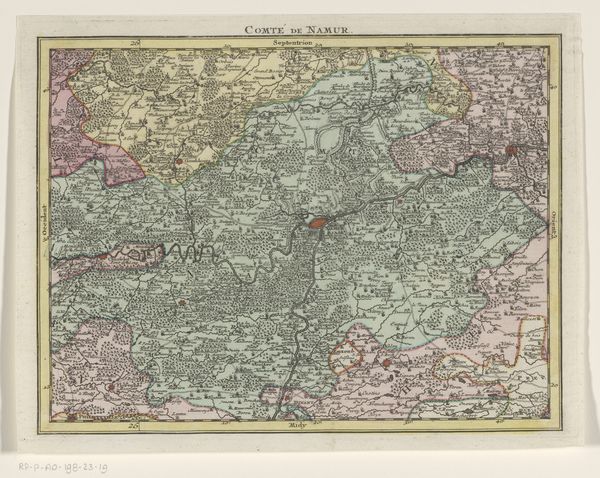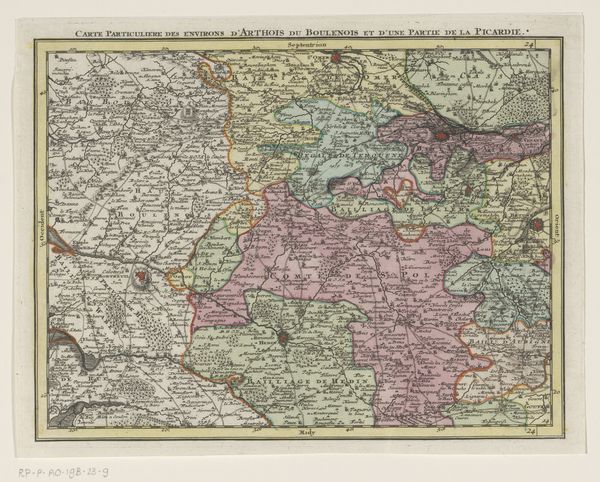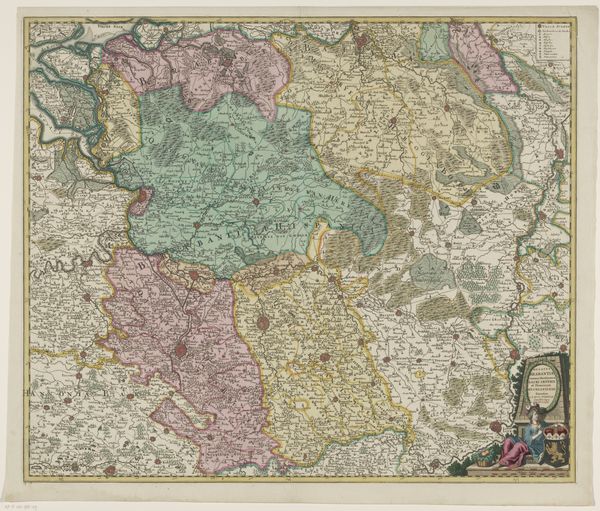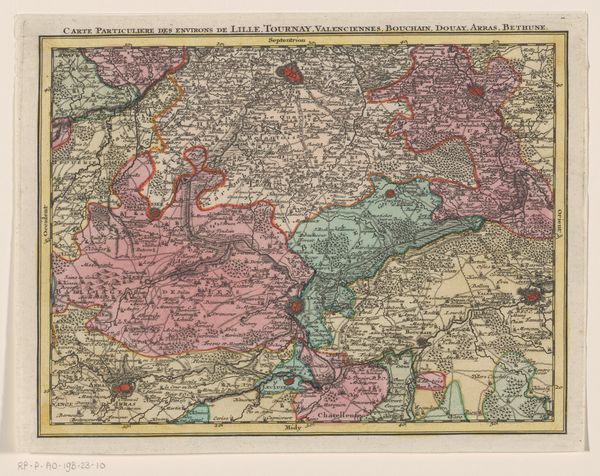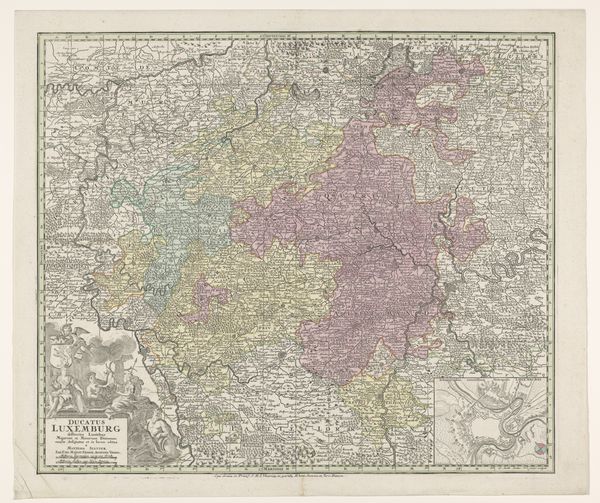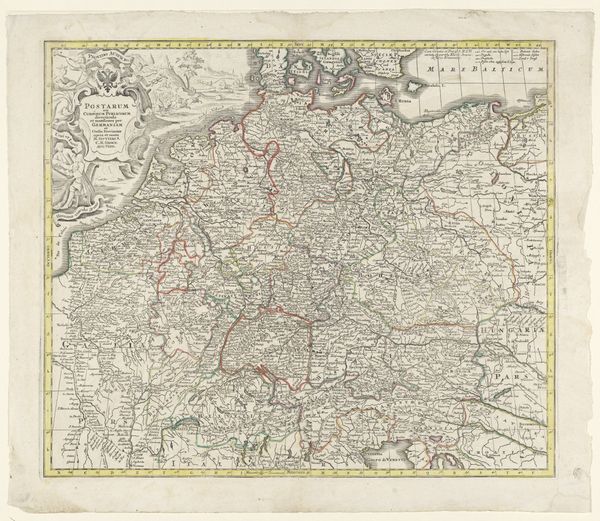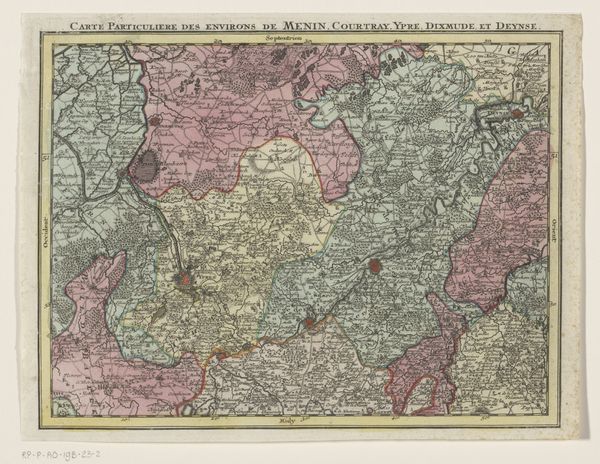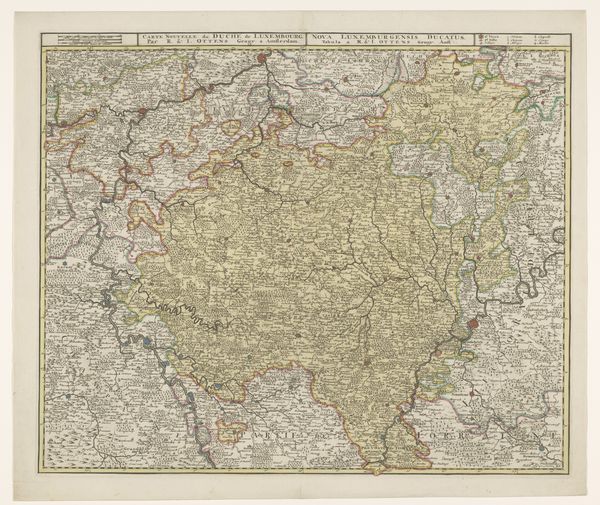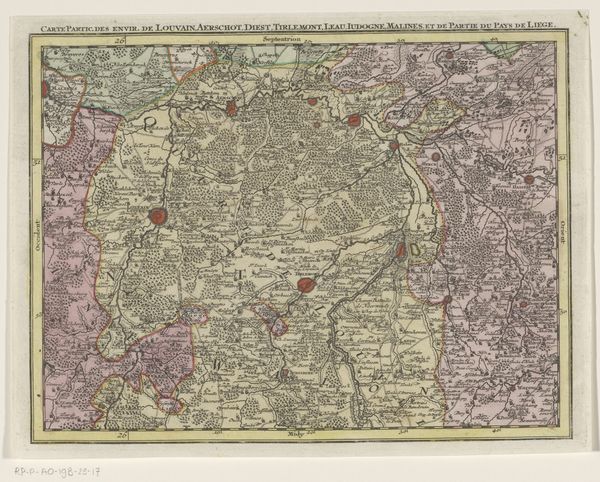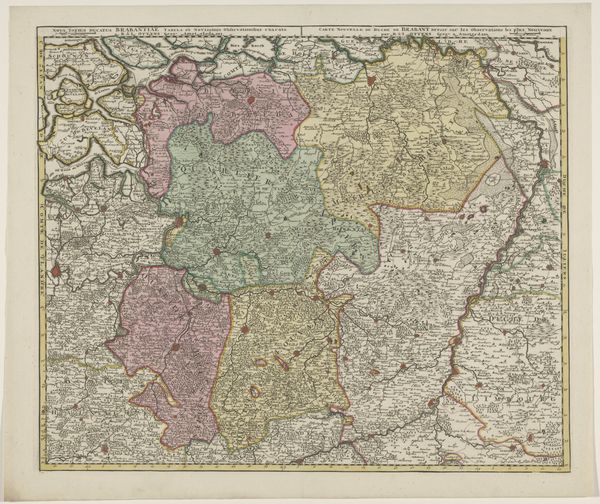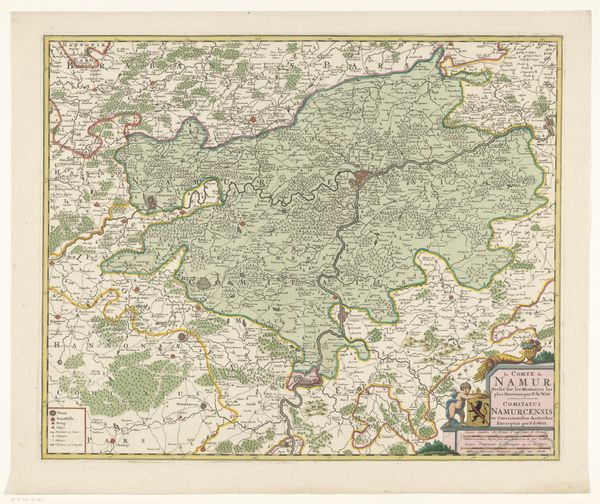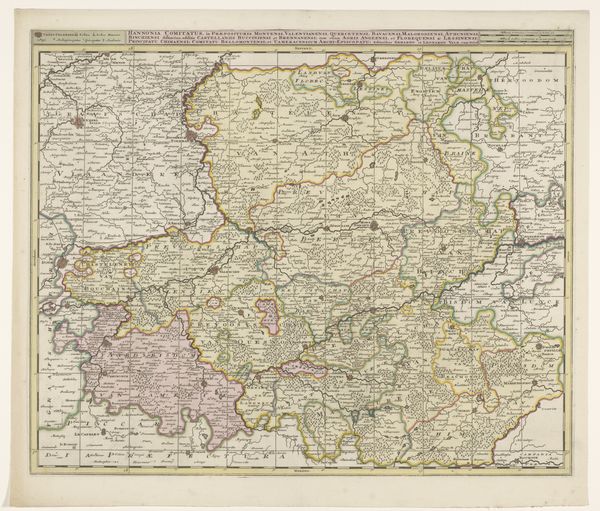
graphic-art, print, engraving
#
graphic-art
# print
#
history-painting
#
engraving
Dimensions: height 497 mm, width 587 mm
Copyright: Rijks Museum: Open Domain
Curator: Here we have “Kaart van het Prinsbisdom Luik,” a map of the Prince-Bishopric of Liege, dating from somewhere between 1727 and 1757, created by Tobias Conrad Lotter. It’s an engraving, printed, and it seems designed for practical and symbolic purposes. Editor: My first impression is one of surprising delicacy. Given its potential as a tool of governance, the fine lines and subdued colors lend it an unexpected elegance. You can almost feel the hand of the engraver meticulously etching the land. Curator: Precisely. The iconography speaks of power, with the regal lions framing the crest. But there’s also the subtle inclusion of details; the trees denote forested areas. The artist is reminding us about the significance of natural resources. It suggests dominion not just over land but the resources within. Editor: The application of color here seems key. Different washes likely designate different administrative regions or territories within the Prince-Bishopric. I'm thinking about the pigments used – what were they, and who had access to them? Did their cost or availability limit production? Curator: It certainly leads us to consider the role this map played in shaping cultural memory. For those viewing it, what did it mean to see their world rendered this way? Did it reinforce their understanding of place, of belonging? The very act of mapping creates a shared reality. Editor: And consider the physical labor – the production, the carving of the copperplate, the repetitive printing… This wasn't just about representing territory; it was a manufacturing process. And that speaks to economic and social power of the cartographer himself and the circles that supported the creation and use of this map. Curator: It prompts reflection about identity as well. A border is never just a line; it delineates “us” from “them,”. Maps like these played a part in forming regional identities. Editor: This really pushes us to examine the layers of meaning imbued in such seemingly straightforward documents. Curator: Indeed, it reveals the intricate interplay between image, power, and cultural narrative.
Comments
No comments
Be the first to comment and join the conversation on the ultimate creative platform.
